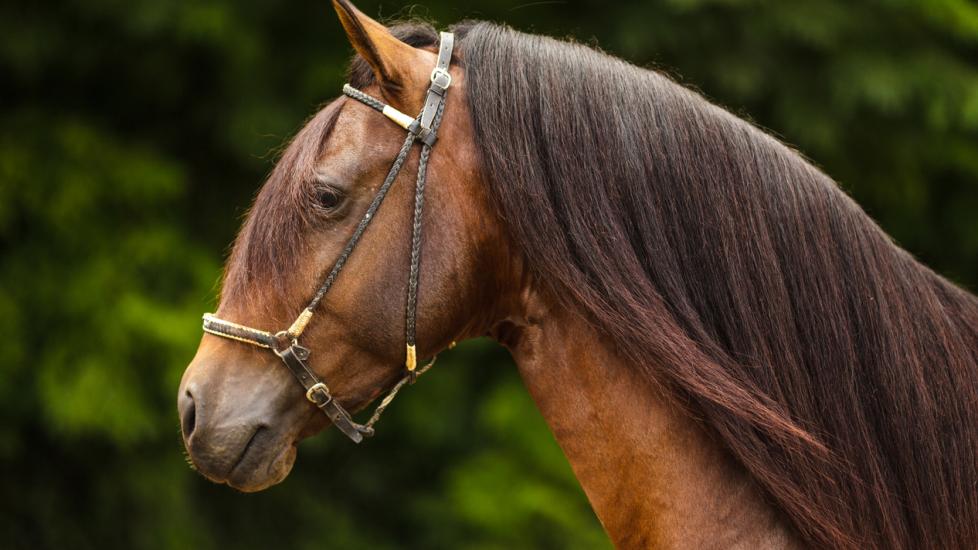Paso Fino
Reviewed for accuracy October 6, 2022.
Renowned for its unique four-beat, lateral gait, the Paso Fino was a result of interbreeding the Spanish Jennet, Barb, and Andalusian horses. This gave the Paso Fino its smooth gait, intelligence, liveliness, endurance, and beautiful form.
Physical Characteristics
The Paso Fino is an attractive medium-sized horse with a small head and widely spaced eyes, typically ranging from 13.2-15.2 hands in height. Its shoulders slope down and its withers—the area between the shoulder blades—are clean and of varying lengths. The Paso Fino's legs, meanwhile, are strong, sleek, and accented with small hooves. Many Paso Finos also have unusually large manes and tails.
Much to the delight of its riders, the gait of the Paso Fino is extremely smooth; it is divided into three paces: classico fino, paso largo, and paso corto; they can also walk and canter. Classico fino is a slow forward movement. Paso largo is the horse's fastest pace. Paso corto is equivalent to a trot and is the most graceful of all the paces.
Personality and Temperament
The Paso Fino is a kind and gentle horse. Its docile temperament makes it an excellent show horse and good for saddle riding. The Paso Fino is also very loyal and fond of its master.
History and Background
It is believed the horses used on Columbus’ second voyage to the "New World" over 500 years ago were Andalusians, Spanish Barbs from North Africa, and the smooth-gaited Spanish Jennets (a now-extinct breed). Centuries of selective breeding by those who colonized the Caribbean and Latin America produced a variety of horse breeds known for their stamina, smooth gait, and beauty; among these breeds is the Paso Fino. Initially popular in Puerto Rico and Colombia, the Paso Fino was later brought to many other Latin American countries, including the Dominican Republic, Aruba, and Venezuela.
The Paso Fino developed in Puerto Rico was a classy show horse, which very much resembled the Spanish Jennet. After they were brought to the United States from Puerto Rico in the mid 1940s, horse fanciers seeking to enhance the Paso Fino imported other similar versions from Latin America for crossbreeding, thus resulting in the modern American Paso Fino.
Care and Health
Paso Finos, while athletic, full of stamina, and overall healthy, do have a prevalence for some conditions such as degenerative suspensory ligament desmitis (DSLD). This is a progressive disease that causes the breakdown of the suspensory branches in the fetlock area, particularly the hindlimbs. You may notice swollen and dropped fetlocks, or your horse shifting weight differently trying to get comfortable. While there is not currently a cure for this disease, there are some daily management changes such as therapeutic shoeing, anti-inflammatories, and controlled turnout that can help keep horses comfortable should they develop it.
Featured Image: iStock.com/THEPALMER
Help us make PetMD better
Was this article helpful?
